You may have heard about geotextiles in passing, but what are they? What is their purpose? We’re here to help explain. Believe it or not, these are more than just fabrics; there are many different types for specific landscaping requirements.
Read on to learn more about geotextile membranes, then head to our range to find your ideal product for the garden.
 Table of contents
Table of contents
- What are geotextile membranes?
- What type of geotextile membranes are there?
- When to use geotextile membranes
What are geotextile membranes?
A geotextile membrane is a piece of fabric inserted into the ground as a form of protective cover. They have various roles and applications but are commonly used in engineering and drainage projects. In some cases, geotextile membranes are called geotextiles or by the brand name Terram. Terram is a brand that specialises in geotextiles and geocells.
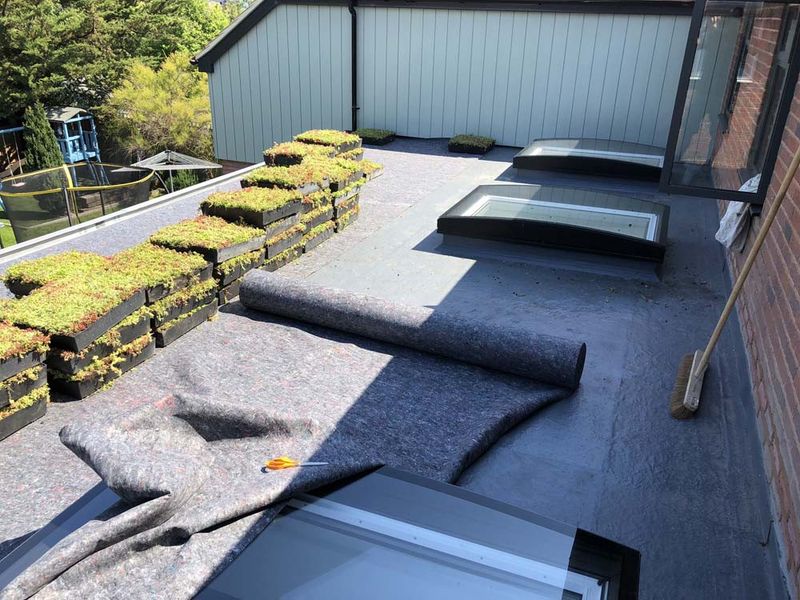
What types of geotextile membranes are there?
Woven and non-woven are common terms for this type of geotextile, but it goes even further than that. Here’s a breakdown of various geotextile membranes and their more defining features.
Permeable geotextile membranes
A permeable geotextile membrane is a porous fabric, meaning it can let water pass through. With this type, you can opt for the membrane to be woven or non-woven.
If you choose the former, a woven permeable geotextile membrane, this is created by weaving individual threads together to form a large, complete piece of material. Now, woven permeable membranes aren’t as porous as some counterparts, but their load capacities are impressive. This means you can use them for erosion control and reinforcement projects, but they may not be as effective in drainage situations.
When compared to how non-woven permeable geotextile membranes are manufactured, this varies quite a bit as they are manufactured from materials such as synthetics bonded together. Once that’s done, they have holes punched in the material.
Impermeable geotextile membranes
Impermeable geotextile membranes work like a waterproof barrier, meaning water cannot pass through them. This makes them handy for stopping water from moving through a particular place or keeping it contained in a specific area.
When to use geotextile membranes
Geotextile membranes serve various purposes in construction. They’re like multitasking superheroes, handling all of the following actions simultaneously:
- Separation
- Filtration
- Reinforcement
- Protection
- Drainage
These nifty layers do a lot of heavy lifting on construction sites. We define these reasonings in more detail below.
Separation
Geotextile membranes serve a nifty purpose in the world of soil management. Imagine you have different soil types hanging out in the same area. You want them to keep their distance, especially when rain decides to join the party. Here’s where the geotextile membranes step in.
The job of a membrane is to play a mediator, preventing the mingling of various soil consistencies and coarseness. When it’s raining, those tiny soil particles love hitching a ride into the percolation channels. As they mix and mingle, the ground starts acting uneven and might even decide to take a little dip, thanks to the smaller particles sneaking between the larger ones. Geotextile membranes separate the different layers of soil without preventing water from passing through and percolating down through the soil layers.
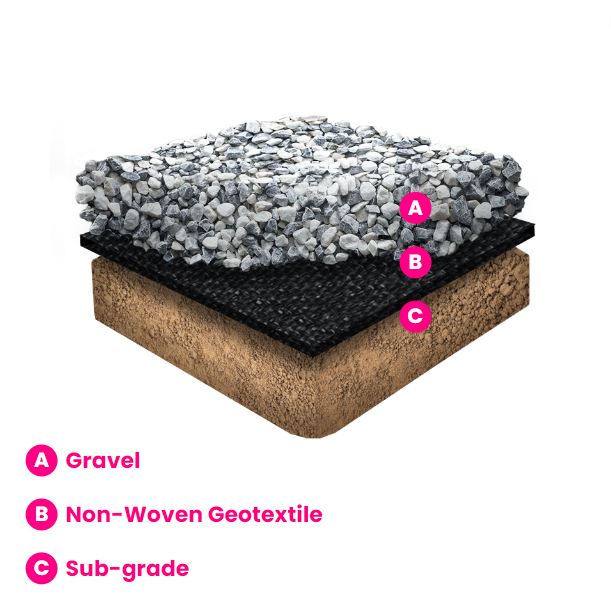
These membranes serve a practical purpose beyond just averting a messy situation in the ground. They’re barriers for the soil, ensuring that the finer material doesn’t mix with the coarser layers. This matters because it prevents the drainage pathways within the rough material from getting clogged up.
Thinking about it like this, if water is trying to find its way through a maze and blocked in its path, this isn’t ideal as it will just build up until it happens – the dreaded flood! The geotextile membranes ensure water can smoothly move through the soil, avoiding the risk of flooding and standing water scenarios. They play a crucial role in maintaining soil order, quietly doing their job to keep everything in check.
Filtration
Not all geotextile membranes prevent water from passing through and are usable as a filtration mechanism. Many drains get blocked up with debris, which results in flooding and other issues. When a geotextile membrane is used, water passes through the membrane. Any other debris or larger particles that want to make it through are stopped from entering the drainage system.
You can use geotextile membranes for sorting particles. How? Well:
- Larger particles will remain on one side of the membrane.
- Medium particles may fall within the membrane without passing through the other side
- As for those finer particles, these may pass all the way through.
It’s also important to know geotextile membranes can promote a lateral flow of run-off and drainage water. How this works is the membrane dissipates the kinetic energy when groundwater rises. So, instead of the water rising continuously and causing flooding, it runs along the membrane laterally.
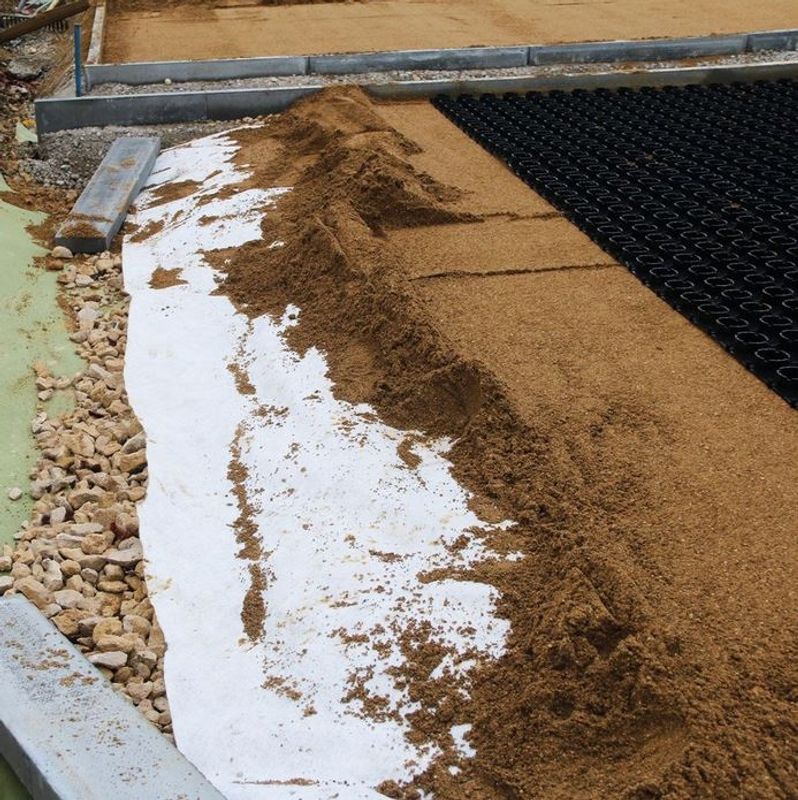
Reinforcement
Geotextile membranes, despite what many might think, play a crucial role in construction and engineering endeavours. Woven geotextiles, with their impressive tensile strengths, are like the superheroes of ground stabilisation. Picture them as the backbone that reinforces the very foundation of your project. This isn’t just about strength either, as some geotextile membranes, with their cross-hatch design, are like the invisible hands that keep drains and ditches in shape, preventing soil and ground materials from going rogue.
Now, hold on, as there’s a little more to this. Geotextiles aren’t just background players; they take the lead in ensuring embankments and roads stand tall on less-than-stellar soils. Imagine them as the secret agents, allowing you to create steeper embankments without the constant fear of a dramatic collapse. So, the next time someone underestimates the power of geotextile membranes, you can confidently tell them that these unassuming materials are the unsung heroes of construction stability.
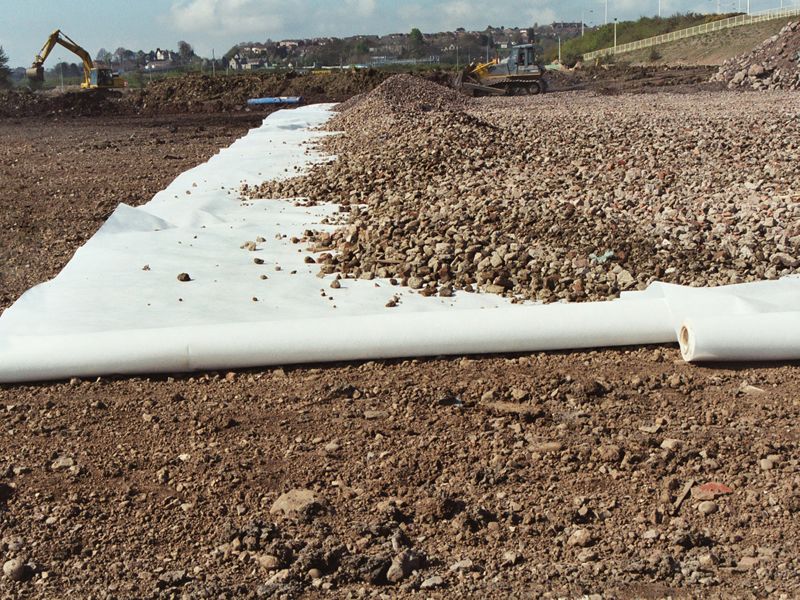
Protection
Landscapes and gardeners will appreciate the protective capabilities of geotextile membranes, particularly against erosion, puncture resistance and more. On the coast, we use geotextile membranes to keep things in check between our coastal defence and the sandy beach. These sturdy materials make sure that stuff like rip rap or gabions doesn’t mess with the fabric, but they’re cool enough to let water drain away.
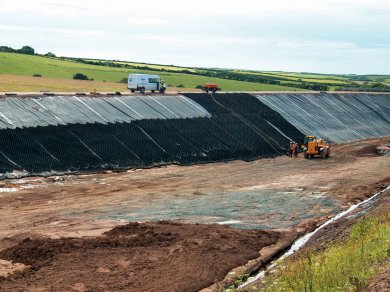
Now, these geotextile things aren’t just beach bodyguards—they’re also into plant protection. Picture this: the membrane lets your plant buddies grow happily, but it’s like a bouncer for unwanted weeds. No competition, no nutrient theft.
And hey, if you need a hardcore barrier to keep things in or out, geotextile membranes have your back. Like, think landfill sites—stopping nasty stuff from messing with the area. Even on a green roof, they’re the superhero, containing things and ensuring water can filter through without causing a ruckus.
Drainage
When handling drainage projects, incorporating geotextile membranes can be a game-changer. These nifty materials find their sweet spot in applications like soakaways and land drains. Picture this: you’re gearing up to install soakaway or land drain elements, and right before they go in, you throw in geotextile membranes. Why? Well, they act as a protective shield, ensuring no pesky silt or debris sneaks into the soakaway, giving it a longer lease on life by preventing those annoying blockages.
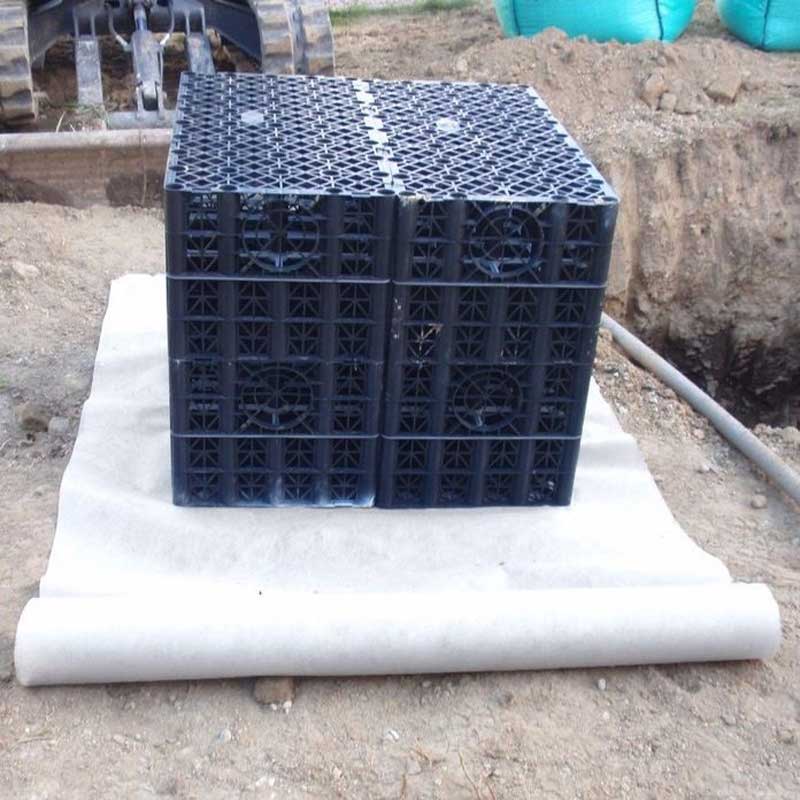
Now listen up, as that’s not all. Geotextile membranes aren’t just one-trick ponies. Wrap them around your land drains and perforated pipes, and voila! You’re creating a barrier that keeps the big stuff—like large chunks of silt or debris—out of your drainage system. The result? A smoother operation with fewer blockages. And here’s the kicker: in some cases, these membranes are cool enough to let those fine particles slip through, maintaining the flow without compromising on protection. Talk about a win-win for your drainage endeavours!
So, what are you waiting for? Head on over to our wide array of geotextile membranes for your latest gardening project(s). We also have a guide to weed control fabrics and more in-depth knowledge about landscaping fabrics if you need more guidance in these related areas. Look around and find out more about other landscaping fabrics as soon as possible!















